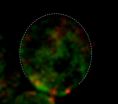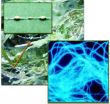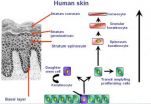(Press-News.org) Johns Hopkins researchers have identified a rare gene mutation in a single family with a high rate of schizophrenia, adding to evidence that abnormal genes play a role in the development of the disease.
The researchers, in a report published in the journal Molecular Psychiatry, say that family members with the mutation in the gene Neuronal PAS domain protein 3 (NPAS3) appear at high risk of developing schizophrenia or another debilitating mental illnesses.
Normally functioning NPAS3 regulates the development of healthy neurons, especially in a region of the brain known as the hippocampus, which appears to be affected in schizophrenia. The Johns Hopkins researchers say they have evidence that the mutation found in the family may lead to abnormal activity of NPAS3, which has implications for brain development and function.
"Understanding the molecular and biological pathways of schizophrenia is a powerful way to advance the development of treatments that have fewer side effects and work better than the treatments now available," says study leader Frederick C. Nucifora Jr., Ph.D., D.O., M.H.S., an assistant professor of psychiatry and behavioral sciences at the Johns Hopkins University School of Medicine. "We could definitely use better medicines."
Along with environmental factors, it is widely believed that many genes play some role in causing schizophrenia, a disease characterized by a variable combination of hallucinations, delusions, impaired cognition and a loss of drive and initiative. The disorder strikes an estimated seven in every 1,000 adults in the United States. While the Johns Hopkins experiments to date show that the NPAS3 mutation is rare, Nucifora says learning as much as possible about the biological role of NPAS3 will likely lead to a better understanding of how other genes contribute to the development of schizophrenia, even in the absence of the NPAS3 mutation.
For the study, Nucifora and his team used blood samples to search the DNA of 34 people with schizophrenia or a related condition, schizoaffective disorder. All 34 were members of families in which more than one person had the disease. The investigators were specifically looking for NPAS3 mutations — previous research suggested it could be involved in schizophrenia — and found it in one of the families.
By analyzing blood samples from that single family — two parents and four adult children — they found that the mother, who has schizophrenia, her two children with schizophrenia, and her child with major depression all had the mutant version of NPAS3. The NPAS3 gene provides instructions for the production of a protein that contains 933 amino acids. The altered gene led to a single flaw: a valine was switched to an isoleucine. Nucifora says it is not yet known how this single mutation affects the function or structure of NPAS3. A possible hint comes from the finding of other investigators that a change from valine to isoleucine in a protein known as APP is linked to Alzheimer's disease.
Nucifora cautions that, by itself, finding a mutation in a single family with mental illness doesn't establish the altered gene as the cause of the illness. Nucifora and his colleagues therefore set out to determine whether the mutation plays any role in the function of NPAS3, which serves as a master switch in cells, controlling the fate of many other genes involved in brain development and metabolism.
To do that, Nucifora and his colleagues grew neurons with either normal or mutated copies of NPAS3 in a dish, and found that the healthy neurons grew nice long extensions, a process that typically allows them to make good connections with other cells and is therefore critical for brain function. In neurons with the mutated gene, the extensions were abnormally short.
Other genes believed to be involved in mental illness also have been found to disrupt the growth of longer neuronal extensions.
"We showed that the mutation does change the function of NPAS3, with potentially harmful effects in neurons," he says. "The next step is to figure out exactly how the genetic disruption alters neuronal function, and how these abnormal neurons influence the broader function of the brain."
Nucifora and his team are now working to create a mouse with the NPAS3 mutation. "If this mutation in NPAS3 is indeed important for human disease, then we should detect abnormalities in the neurons of mice with mutant NPAS3, and the mice should have impairments in learning, memory and social behavior," he says.
###
The research was supported by the Brain & Behavior Research Foundation NARSAD Young Investigator Grant, the Milton and Tamar Maltz Family Foundation and the Hatten S. Yoder III Memorial Fellowship.
Other Johns Hopkins researchers involved in the study include Lan Yu, Ph.D.; Nicolas Arbez, Ph.D.; Leslie G. Nucifora, Ph.D.; Gabrielle L. Sell, B.S.; Christopher A. Ross, M.D., Ph.D.; and Russell L. Margolis, M.D.
Evidence mounts for role of mutated genes in development of schizophrenia
Johns Hopkins study links 1 family's rare gene mutation to brain cell abnormality and mental illness
2013-01-22
ELSE PRESS RELEASES FROM THIS DATE:
A diffusion trap
2013-01-22
KANSAS CITY, MO – Over the past several years, Rong Li, Ph.D., at the Stowers Institute for Medical Research has been making crucial discoveries about the development of cell polarity—the process by which one side of a cell becomes different from the other side. Such polarity is critical for the functioning of the vast majority of cells. The outside surface of skin cells is very different from the surface inside the body, for example, while nerve cells have delicately branching dendrites on one end and axons on the other. Li's lab studies yeast cells, which form a unique ...
Synchrotron infrared unveils a mysterious microbial community
2013-01-22
In the fall of 2010, Hoi-Ying Holman of the U.S. Department of Energy's Lawrence Berkeley National Laboratory (Berkeley Lab) was approached by an international team researching a mysterious microbial community discovered deep in cold sulfur springs in southern Germany.
"They told me what they were doing and said, 'We know what you contributed to the oil-spill research,'" recalls Holman, who heads the Chemical Ecology group in Berkeley Lab's Earth Sciences Division. "They wondered if I could help them determine the biochemistry of their microbe samples."
Holman had ...
Immune cells engineered in lab to resist HIV infection, Stanford study shows
2013-01-22
STANFORD, Calif. — Researchers at the Stanford University School of Medicine have found a novel way to engineer key cells of the immune system so they remain resistant to infection with HIV, the virus that causes AIDS.
A new study describes the use of a kind of molecular scissors to cut and paste a series of HIV-resistant genes into T cells, specialized immune cells targeted by the AIDS virus. The genome editing was made in a gene that the virus uses to gain entry into the cell. By inactivating a receptor gene and inserting additional anti-HIV genes, the virus was blocked ...
Sex of early birds suggests dinosaur reproductive style
2013-01-22
In a paper published in Nature Communications on January 22, 2013, a team of paleontologists including Dr. Luis Chiappe, Director of the Natural History Museum of Los Angeles County's (NHM) Dinosaur Institute, has discovered a way to determine the sex of an avian dinosaur species.
Confuciusornis sanctus, a 125-million-year-old Mesozoic bird, had remarkable differences in plumage — some had long, almost body length ornamental tail feathers, others had none — features that have been interpreted as the earliest example of avian courtship. However, the idea that male Confuciusornis ...
The skin aging regulator
2013-01-22
These mechanisms, described in vivo in mice, engage molecule CD98hc, which is involved in epidermis renewal and could be an indicator of the skin's capacity for regeneration.
The results were published in the Journal of Experimental Medicine review.
The epidermis, the surface layer of the skin, is mainly composed of keratinocytes cells, which, in humans, are renewed continuously over a 21-day cycle. These cells are located on a membrane made up of components from the extracellular matrix that provides the junction with the dermis, the deep layer of the skin (see diagram). ...
Harmful effects of bisphenol A proved experimentally
2013-01-22
Bisphenol A (BPA) is a chemical compound that is included in the composition of plastics and resins. It is used, for example, in the manufacture of food containers such as bottles and babies' feeding bottles. It is also found in the protective films used inside food and drink cans and on till receipts where it used as a discloser. Significant levels of BPA have also been found in human blood, urine, amniotic fluid and placentas. Recent studies have shown that this industrial component has harmful effects on reproductive ability, development and the metabolism of laboratory ...
Analysis of fracking wastewater yields some surprises
2013-01-22
DURHAM, N.C. -- Hydraulically fractured natural gas wells are producing less wastewater per unit of gas recovered than conventional wells would. But the scale of fracking operations in the Marcellus shale region is so vast that the wastewater it produces threatens to overwhelm the region's wastewater disposal capacity, according to new analysis by researchers at Duke and Kent State universities.
Hydraulically fractured natural gas wells in the Marcellus shale region of Pennsylvania produce only about 35 percent as much wastewater per unit of gas recovered as conventional ...
EARTH: The dangers of solar storms
2013-01-22
Alexandria, VA – Throughout history, humanity has steadily increased its dependence upon technology. Although technology has vastly improved the quality of life for billions of people, it has also opened us up to new risks and vulnerabilities. Terrorism and natural disasters might be at the forefront of the minds of policymakers and the U.S. population, but a significant threat lurks over our heads: the sun. A massive solar storm, the size last seen a century and a half ago, could easily leave hundreds of millions of people in the dark for days, weeks or even months.
The ...
Unprecedented glacier melting in the Andes blamed on climate change
2013-01-22
Glaciers in the tropical Andes have been retreating at increasing rate since the 1970s, scientists write in the most comprehensive review to date of Andean glacier observations. The researchers blame the melting on rising temperatures as the region has warmed about 0.7°C over the past 50 years (1950-1994). This unprecedented retreat could affect water supply to Andean populations in the near future. These conclusions are published today in The Cryosphere, an Open Access journal of the European Geosciences Union (EGU).
The international team of scientists – uniting researchers ...
How can evolutionary biology explain why we get cancer?
2013-01-22
Over 500 billion cells in our bodies will be replaced daily, yet natural selection has enabled us to develop defenses against the cellular mutations which could cause cancer. It is this relationship between evolution and the body's fight against cancer which is explored in a new special issue of the Open Access journal Evolutionary Applications.
"Cancer is far from a single well-defined disease which we can identify and eradicate," said Dr Athena Aktipis, Director, Human and Social Evolution, Center for Evolution and Cancer at the University of California, San Francisco. ...
LAST 30 PRESS RELEASES:
Why nail-biting, procrastination and other self-sabotaging behaviors are rooted in survival instincts
Regional variations in mechanical properties of porcine leptomeninges
Artificial empathy in therapy and healthcare: advancements in interpersonal interaction technologies
Why some brains switch gears more efficiently than others
UVA’s Jundong Li wins ICDM’S 2025 Tao Li Award for data mining, machine learning
UVA’s low-power, high-performance computer power player Mircea Stan earns National Academy of Inventors fellowship
Not playing by the rules: USU researcher explores filamentous algae dynamics in rivers
Do our body clocks influence our risk of dementia?
Anthropologists offer new evidence of bipedalism in long-debated fossil discovery
Safer receipt paper from wood
Dosage-sensitive genes suggest no whole-genome duplications in ancestral angiosperm
First ancient human herpesvirus genomes document their deep history with humans
Why Some Bacteria Survive Antibiotics and How to Stop Them - New study reveals that bacteria can survive antibiotic treatment through two fundamentally different “shutdown modes”
UCLA study links scar healing to dangerous placenta condition
CHANGE-seq-BE finds off-target changes in the genome from base editors
The Journal of Nuclear Medicine Ahead-of-Print Tip Sheet: January 2, 2026
Delayed or absent first dose of measles, mumps, and rubella vaccination
Trends in US preterm birth rates by household income and race and ethnicity
Study identifies potential biomarker linked to progression and brain inflammation in multiple sclerosis
Many mothers in Norway do not show up for postnatal check-ups
Researchers want to find out why quick clay is so unstable
Superradiant spins show teamwork at the quantum scale
Cleveland Clinic Research links tumor bacteria to immunotherapy resistance in head and neck cancer
First Editorial of 2026: Resisting AI slop
Joint ground- and space-based observations reveal Saturn-mass rogue planet
Inheritable genetic variant offers protection against blood cancer risk and progression
Pigs settled Pacific islands alongside early human voyagers
A Coral reef’s daily pulse reshapes microbes in surrounding waters
EAST Tokamak experiments exceed plasma density limit, offering new approach to fusion ignition
Groundbreaking discovery reveals Africa’s oldest cremation pyre and complex ritual practices
[Press-News.org] Evidence mounts for role of mutated genes in development of schizophreniaJohns Hopkins study links 1 family's rare gene mutation to brain cell abnormality and mental illness


